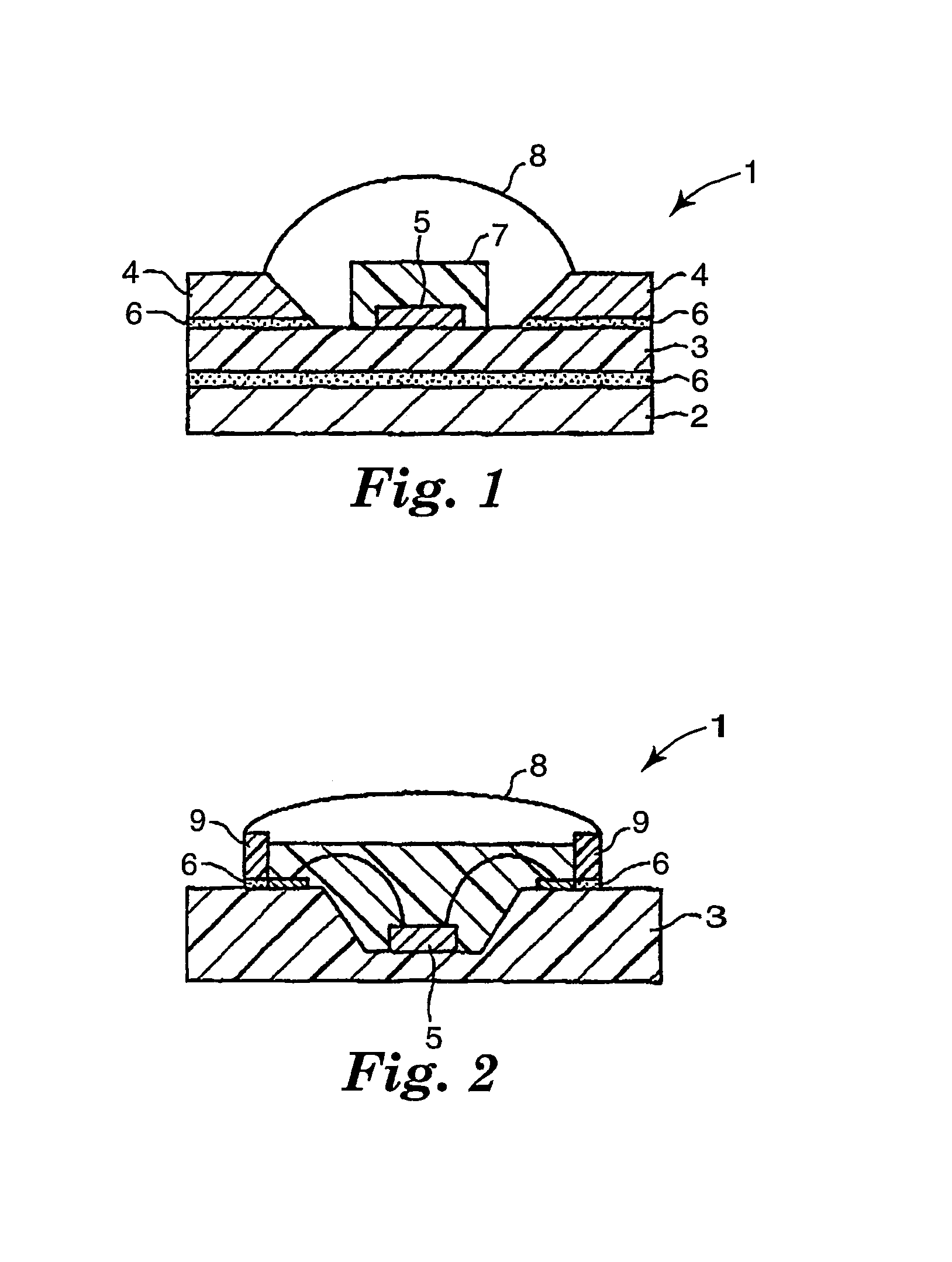Adhesive sheet for light-emitting diode device and light-emitting diode device
a technology of light-emitting diodes and adhesive sheets, which is applied in the direction of adhesive types, film/foil adhesives, semiconductor/solid-state device details, etc., can solve the problems of poor heat resistance of sheet-type thermoplastic adhesives, reduced light-emitting efficiency of devices, and reduced light-emitting efficiency of light-emitting diodes. , to achieve the effect of restrainting flowability, reducing light-emitting efficiency of light-
- Summary
- Abstract
- Description
- Claims
- Application Information
AI Technical Summary
Benefits of technology
Problems solved by technology
Method used
Image
Examples
example 2
[0061]A precursor composition was prepared by mixing 70 mass % of an ethylene-glycidylmethacrylate copolymer (BONDFAST CG5001, a trade name of the product produced by Sumitomo Kagaku Kogyo KK, mass ratio of ethylene unit:glycidylmethacrylate unit=82:18), 29.5 mass % of ethylene-ethylacrylate copolymer (NUC-EEA 6070, a trade name of the product produced by Nippon Unicar KK, and 0.5 mass % of a cationic polymerization catalyst (Ar3SSBF6, wherein Ar means an aromatic functional group), by a kneading apparatus until they are uniformly mixed. The mixing operation was carried out at 110° C. for 10 minutes.
[0062]The precursor composition was sandwiched between two sheets of PET film (peeling film), passed through a knife gap heated to 140° C. to obtain a film type precursor having a 100 μm thickness. An ultraviolet ray was irradiated to the precursor by a high pressure mercury lamp of 20 W / cm positioned 20 cm away from the precursor. The radiation was radiated in an amount of 630 mJ / cm2 to...
example 3
[0063]An adhesive sheet (adhesive sheet 3) was obtained by repeating the procedure of Example 1 except that an electron ray radiated film prepared from a mixture of a polyolefin copolymer containing epoxy groups / alkyl phenol / novolac resin / anti-oxidant was used.
PUM
| Property | Measurement | Unit |
|---|---|---|
| mass % | aaaaa | aaaaa |
| mass % | aaaaa | aaaaa |
| elastic modulus | aaaaa | aaaaa |
Abstract
Description
Claims
Application Information
 Login to View More
Login to View More - R&D
- Intellectual Property
- Life Sciences
- Materials
- Tech Scout
- Unparalleled Data Quality
- Higher Quality Content
- 60% Fewer Hallucinations
Browse by: Latest US Patents, China's latest patents, Technical Efficacy Thesaurus, Application Domain, Technology Topic, Popular Technical Reports.
© 2025 PatSnap. All rights reserved.Legal|Privacy policy|Modern Slavery Act Transparency Statement|Sitemap|About US| Contact US: help@patsnap.com

